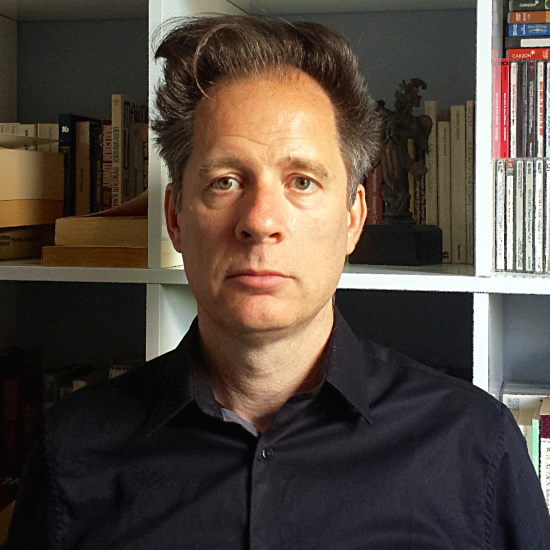Links to external sources may no longer work as intended. The content may not represent the latest thinking in this area or the Society’s current position on the topic.
New perspectives on quantum many-body chaos
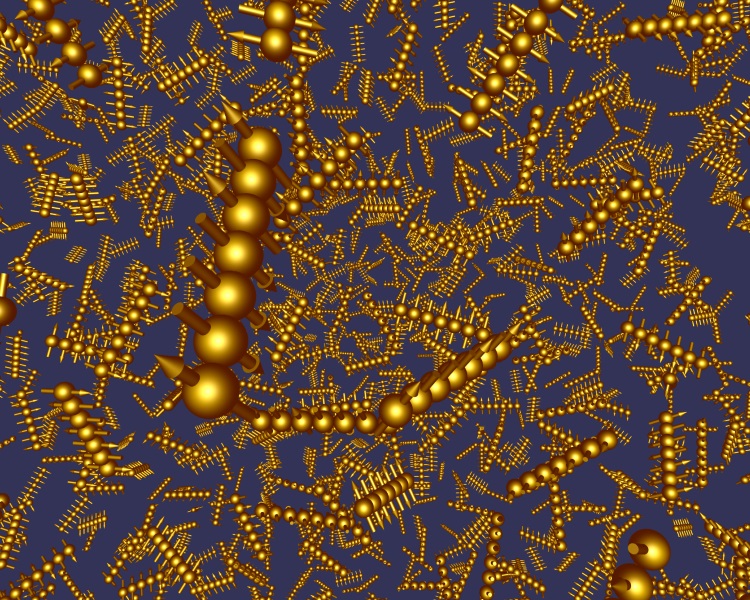
Online scientific discussion meeting organised by Dr Zlatko Papic, Professor Juan Garrahan, Professor Jonathan Keating FRS, Dr Mike Blake and Dr Achilleas Lazarides.
In the last few years the study of chaos in interacting quantum many-body systems has experienced a remarkable resurgence, combining insights from mathematical physics, string theory and condensed matter physics. This timely meeting brought together an international selection of researchers to cement the UK’s position as a world leader in this rapidly developing field.
Meeting papers will be published in a future issue of Philosophical Transactions of the Royal Society A.
Enquiries: contact the Scientific Programmes team
Organisers
Schedule
Chair
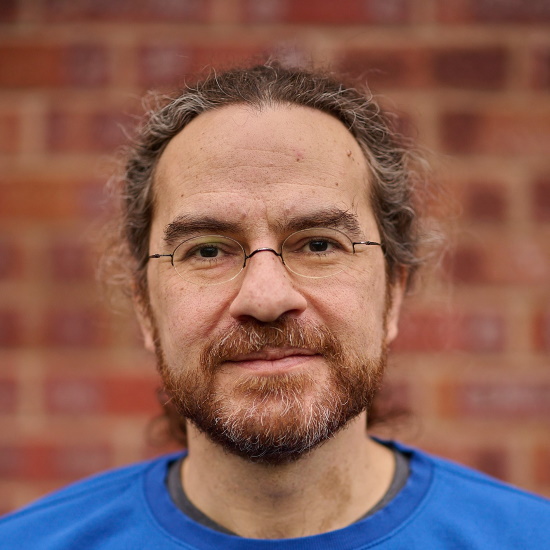
Dr Achilleas Lazarides, Loughborough University, UK

Dr Achilleas Lazarides, Loughborough University, UK
Achilleas Lazarides is a theoretical physicist, currently a Lecturer in Applied Mathematics at Loughborough University. He obtained his PhD at Imperial College, before postdoctoral appointments in Leuven and Utrecht, followed by a long period at the Max Planck Institute for the Physics of Complex Systems in Dresden. His research has ranged over a broad range over the years, recently concentrating on many-body quantum dynamics, in particular in driven, constrained and non-ergodic systems.
| 15:00 - 15:40 |
Probing and controlling many-body dynamics in Rydberg atom arrays
Controlling non-equilibrium quantum dynamics in many-body systems is an outstanding challenge as interactions typically lead to thermalization and a chaotic spreading throughout Hilbert space. We experimentally investigate non-equilibrium dynamics following rapid quenches in a many-body system composed of up to 256 strongly interacting qubits in one and two spatial dimensions. Using a programmable quantum simulator based on Rydberg atom arrays, we probe coherent revivals corresponding to quantum many-body scars. Remarkably, we discover that scar revivals can be stabilized by periodic driving, which generates a robust subharmonic response akin to discrete time-crystalline order. We map Hilbert space dynamics, geometry dependence, phase diagrams, and system-size dependence of this emergent phenomenon, demonstrating novel ways to steer entanglement dynamics in many-body systems and enabling potential applications in quantum information science. 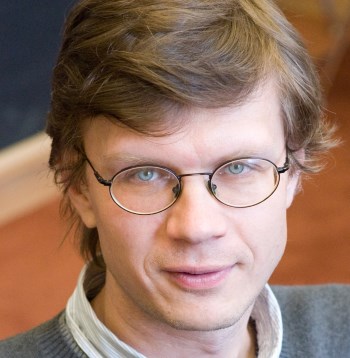
Professor Mikhail Lukin, Harvard University, USA

Professor Mikhail Lukin, Harvard University, USAMikhail Lukin received the Ph.D. degree from Texas A&M University in 1998. He has been on a faculty of Harvard Physics Department since 2001, where he is currently George Vasmer Leverett Professor of Physics, and a co-Director of Harvard-MIT Center for Ultracold Atoms and of Harvard Quantum Initiative in Science and Engineering. His research interests include quantum optics, quantum control of atomic and nanoscale solid-state systems, quantum metrology, nanophotonics, and quantum information science. He has co-authored over 400 technical papers and has received a number of awards, including the Alfred P. Sloan Fellowship, David and Lucile Packard Fellowship for Science and Engineering, NSF Career Award, Adolph Lomb Medal of the Optical Society of America, AAAS Newcomb Cleveland Prize, APS I.I.Rabi Prize, Vannevar Bush Faculty Fellowship, Julius Springer Prize for Applied Physics, and the Willis E. Lamb Award for Laser Science and Quantum Optics. He is a fellow of the OSA, APS, and AAAS and a member of the National Academy of Sciences. |
|---|---|
| 15:40 - 16:20 |
Localisation phenomena in frustrated magnets
Elementary excitations in frustrated magnetic systems often take the form of fractionalised point-like quasiparticles. In recent years significant progress was made to understand the nature of these excitations and the importance of their effective description to gain insight into the thermodynamic properties of frustrated systems. Their dynamics on the other hand remains to date a significantly taller order. Whereas in a few cases the quasiparticles can be modelled as free, their interplay with the underlying spin vacuum from which they are borne is generally highly nontrivial. The result is a rich playground of constrained motion, reduced (fractal) dimensionality, and self-generated disorder, giving rise to intriguing instances of slow dynamics and localisation which may be accessible in state of the art experiments on magnetic systems. This talk reviews some key examples, in the context of U(1) spin ice and Z_2 spin liquids, and a compass model of complex oxides. In the U(1) case, dynamical constraints lead to quasi-1D motion on random comb structures where configurational disorder produces compact localised states that survive in presence of interactions. In the Z_2 case, correlation holes induced by semionic statistics give rise to long-lived metastable states and strong out-of-equilibrium behaviour. Finally, in the compass model, disorder free localisation results in dynamical behaviour characteristic of many-body-localised system, including the logarithmic growth of entanglement; this is all the more exciting since signatures are accessible in certain components of the dynamical structure factor, experimentally measurable in the magnetic oxides described by this model. 
Professor Claudio Castelnovo, University of Cambridge, UK

Professor Claudio Castelnovo, University of Cambridge, UKProfessor Claudio Castelnovo (Theory of Condensed Matter group, Cavendish Laboratory) did his undergraduate studies at the University of Milan, followed by a PhD at Boston University. He came to the UK as a postdoc at Oxford and held an EPSRC fellowship before becoming a lecturer at Royal Holloway University of London in 2010. He was later hired as a lecturer at Cambridge in 2012, where he is currently a Professor of Theoretical Physics at the Cavendish Laboratory. He was co-recipient of the EPS Europhysics Prize (2012) and received the IUPAP C10 Young Scientist Prize (2013). Professor Castelnovo has a track record working the thermodynamics and equilibration properties of frustrated magnetic systems, classical and quantum spin liquids, slow dynamics in non-disordered systems, and out of equilibrium properties in systems with fractionalised excitations. |
| 16:20 - 16:40 | Coffee break |
| 16:40 - 17:20 |
A constructive theory of the numerically accessible many-body localized to thermal crossover
Numerical studies generically reveal that disordered quantum chains thermalize at weak disorder, and many-body localize (MBL) at strong disorder. The crossover at intermediate disorder strengths is poorly understood as it is only accessible by exact diagonalization (ED) in short chains. Phenomenological descriptions of the MBL-thermal transition abound, but these rely on rare-region effects and thus describe the crossover at much larger chain lengths if they apply at all. We construct a theory for the numerically observed one-dimensional MBL-thermal crossover by analysing the statistics of many-body resonances induced by local perturbations in a presumptively MBL chain. The model reproduces several properties of the crossover region, including an apparent correlation length exponent of \nu=1, the linear drift of the critical disorder strength with system size, scale-free resonances, sub-thermal entanglement entropy of small subsystems, and exponential increase of the Thouless time with disorder strength. We derive the controversial numerical observations in recent works challenging the MBL orthodoxy and argue that the numerics to date is consistent with a MBL phase in the thermodynamic limit. 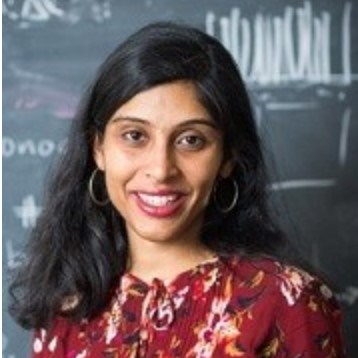
Dr Anushya Chandran, Boston University, USA

Dr Anushya Chandran, Boston University, USAAnushya Chandran is a many-body condensed matter physicist at Boston University with broad interests in driven quantum matter, localization, topological systems and many-body entanglement. She obtained her B.Tech degree from the Indian Institute of Technology in Madras in Electrical Engineering, and her PhD from Princeton University in physics. After a postdoctoral position at the Perimeter Institute, she started as an assistant professor position at Boston University in 2016. Dr. Chandran is a recipient of the Sloan research Fellowship and the Faculty Early Career award from the NSF. |
| 17:20 - 18:00 |
Optically Programmable Interactions for Quantum Simulation
The dream of the quantum engineer is to have an “arbitrary waveform generator” for designing quantum states and Hamiltonians. Motivated by this vision, I will report on advances in optical control of long-range interactions among cold atoms. By coupling atoms to light in an optical resonator, we generate tunable non-local Heisenberg interactions, characterizing the resulting phases and dynamics by real-space imaging. Notable observations include interaction-based protection of spin coherence and photon-mediated spin-mixing—a new mechanism for generating correlated atom pairs. I will present recent results on optically programming the distance-dependence of the spin-spin couplings, with prospects for studies of fast scrambling. I will also touch on broader prospects in quantum simulation, quantum optimization, and quantum metrology. 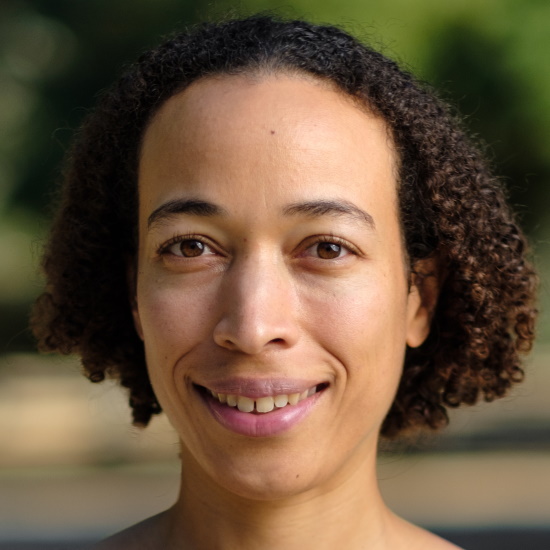
Professor Monika Schleier-Smith, Stanford University, USA

Professor Monika Schleier-Smith, Stanford University, USAMonika Schleier-Smith is an Associate Professor in the Physics Department at Stanford University. She received her Ph.D. from the Massachusetts Institute of Technology, following undergraduate studies at Harvard University, and subsequently pursued postdoctoral research at the LMU Munich and Max Planck Institute of Quantum Optics. Her current research centers on advancing optical control of interactions among laser-cooled atoms, with an eye towards applications in quantum simulation and quantum metrology. She has pioneered techniques and ideas for simulating phenomena of condensed-matter physics and quantum gravity using tools of atomic physics, and developed protocols in quantum control for entanglement-enhanced sensing. Her honors and awards include the National Science Foundation CAREER Award, President’s Early Career Award for Science and Engineering, a MacArthur Foundation Fellowship, and the I. I. Rabi Prize of the American Physical Society. |
| 18:00 - 19:00 | Poster Session |
Chair
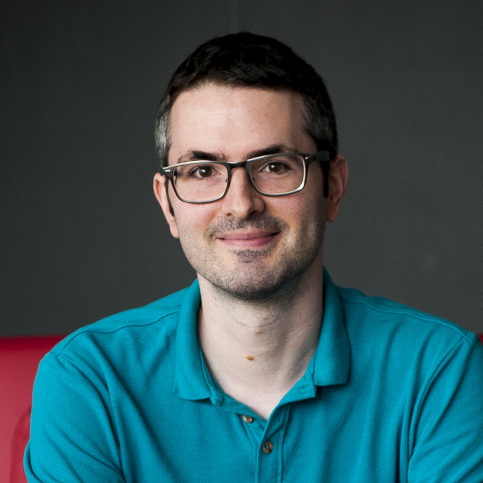
Dr Zlatko Papic, University of Leeds, UK

Dr Zlatko Papic, University of Leeds, UK
Dr Zlatko Papic is an Associate Professor in Theoretical Physics at University of Leeds. He obtained his PhD at Université Paris Sud in 2010. He was a postdoctoral researcher at Princeton University (2010-2013), and a joint postdoctoral fellow between Perimeter Institute and Institute for Quantum Computing in Waterloo (2013-2015). His research spans condensed matter theory and quantum information, focusing on topology and dynamics in quantum many-body systems, such as topological phases of matter, the fractional quantum Hall effect, and many-body localisation.
| 15:00 - 15:40 |
Exact eigenstates in non-integrable systems: A violation of ETH
We find that several non-integrable systems exhibit some exact eigenstates that span the energy spectrum from lowest to the highest state. In the AKLT Hamiltonian and in several others “special” non-integrable models, we are able to obtain the analytic expression of states exactly and to compute their entanglement spectrum and entropy to show that they violate the eigenstate thermalization hypothesis. We then focus on the eta pairing states and show that they can become scars upon a Hamiltonian deformation; this gives a “generic” way of obtaining SCARS by deforming a Lie algebra. 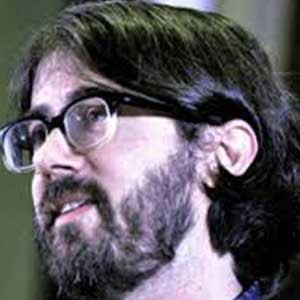
Professor Andrei Bernevig, Princeton University, USA

Professor Andrei Bernevig, Princeton University, USAAndrei Bernevig is a Professor of Physics at Princeton University in the United States. He took his doctorate in 2006 at Stanford University, USA, and subsequently became a postdoc at the Princeton Center for Theoretical Physics at Princeton University, where he then held various professorships. Bernevig has received numerous prizes for young researchers, including the 2014 Sackler Prize, the Packard Fellowship, the 2016 New Horizons Prize and a 2017 Guggenheim Fellowship. |
|---|---|
| 15:40 - 16:20 |
Many body quantum chaos and Feynman histories
We study many-body quantum dynamics using Floquet quantum circuits in one space dimension as simple examples of systems with local couplings that support ergodic phases. Physical properties can be expressed in terms of multiple sums over Feynman histories, which for these models are many-body orbits in Fock space. A natural simplification of these sums is the diagonal approximation, where the only terms that are retained are ones in which each orbit is paired with a partner that carries the complex conjugate weight. We examine when the diagonal approximation holds, its consequences in calculations of physical properties, and the nature of the leading corrections to it. We show that properties are dominated at long times by contributions to orbit sums in which each orbit is paired locally with a conjugate, as in the diagonal approximation, but that in large systems these dominant contributions consist of many spatial domains, with distinct local pairings in neighbouring domains. The existence of these domains is reflected in deviations of the spectral form factor from RMT predictions, and of matrix element correlations from ETH predictions; deviations of both kinds diverge with system size. We demonstrate that our physical picture of orbit-pairing domains has a precise correspondence in the spectral properties of a transfer matrix that acts in the space direction to generate the ensemble-averaged spectral form factor. (Joint work with Sam Garratt.) 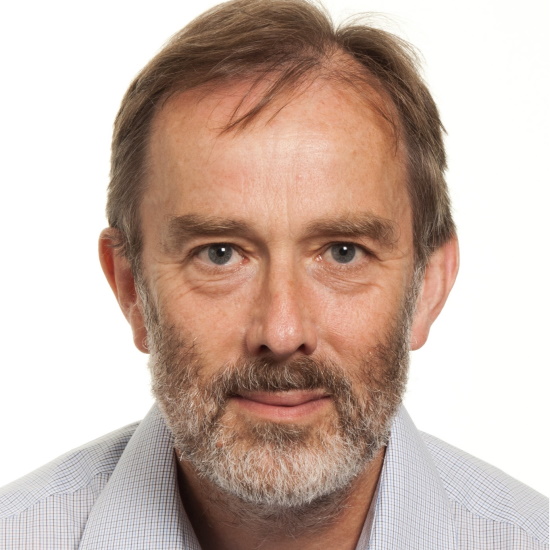
Professor John Chalker, University of Oxford, UK

Professor John Chalker, University of Oxford, UKJohn Chalker is a Professor in the Physics Department at Oxford University and a Senior Research Fellow at St Hugh's College, Oxford. His research is in theoretical condensed matter physics with a current focus on many-body quantum systems far from equilibrium and on frustrated magnets. He has also worked extensively on disordered systems and on the quantum Hall effect. He received his B. A. in Physics and Theoretical Physics from Cambridge University and his D.Phil in Theoretical Physics from Oxford University. He held a Postdoctoral Fellowship at Heidelberg University, was a Lecturer in Physics at Southampton University, and has been a member of academic staff at Oxford University since 1991. He was the Institute of Physics Mott Lecturer in 2000 and was awarded a Research Prize by the A. von Humboldt Foundation in 2000, the Rayleigh Medal and Prize of the Institute of Physics in 2008, and the Dirac Medal and Prize of the Institute of Physics in 2018. |
| 16:20 - 17:00 |
Random multipolar driving: tunably slow heating through spectral engineering
Driven quantum systems may realize novel phenomena absent in static systems, but driving-induced heating can limit the time-scale on which these persist. We study heating in interacting quantum many-body systems driven by random sequences with n−multipolar correlations, corresponding to a polynomially suppressed low frequency spectrum. For n≥1, we find a prethermal regime, the lifetime of which grows algebraically with the driving rate, with exponent 2n+1. A simple theory based on Fermi's golden rule accounts for this behaviour. The quasiperiodic Thue-Morse sequence corresponds to the n→∞ limit, and accordingly exhibits an exponentially long-lived prethermal regime. Despite the absence of periodicity in the drive, and in spite of its eventual heat death, the prethermal regime can host versatile non-equilibrium phases, which we illustrate with a random multipolar discrete time crystal. 
Professor Roderich Moessner, Max Planck Institute for the Physics of Complex Systems, Germany

Professor Roderich Moessner, Max Planck Institute for the Physics of Complex Systems, GermanyProfessor Roderich Moessner is director at the Max Planck Institute for the Physics of Complex Systems. He has previously held faculty positions at Ecole Normale Superieure in Paris as well as at Oxford University, where he had also done his doctoral studies, which were followed by a postdoctoral appointment at Princeton University. His research interests are in theoretical condensed matter and statistical physics as well as quantum information theory. In particular, he investigates the physics of strong fluctuations in many-body systems, which may be due to frustration, competing degrees of freedom or quantum fluctuations. Among the prizes he has received are the Europhysics Prize of the Condensed Matter Division of the European Physical Society, as well as the Leibniz Prize of the German Science Foundation. |
| 17:00 - 17:20 | Coffee break |
| 17:20 - 18:00 | Presentation by Professor Eric Heller: Talk title tbc |
| 18:00 - 19:00 |
Panel Discussion 1
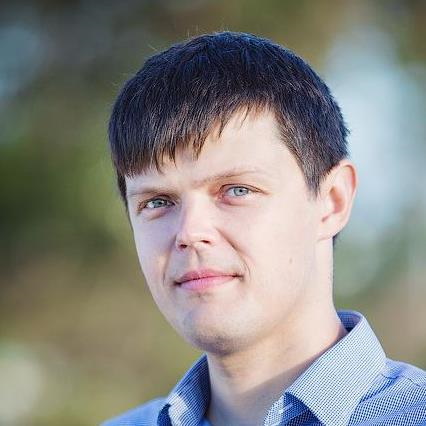
Dr Maksym Serbyn, IST, Austria

Dr Maksym Serbyn, IST, AustriaMaksym Serbyn is a theoretical physicists interested in properties of non-equilibrium quantum systems. Maksym got BS and MS degree from Moscow Institute of Physics and Technology and acquired his PhD from Massachusetts Institute of Technology in 2014. After holding a Gordon and Betty Moore postdoctoral Fellowship at University of California, Berkeley from 2014-2017, he started his own group at IST Austria in July of 2017. 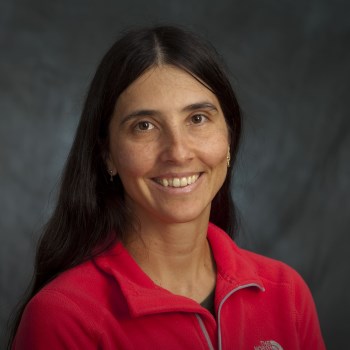
Professor Lea Santos, Yeshiva University, USA

Professor Lea Santos, Yeshiva University, USALea F. Santos is a Professor of Physics at Yeshiva University. She has a Ph.D. in theoretical physics from the University of São Paulo and postdoctoral experiences at Yale University, Michigan State University, and Dartmouth College. She is at the editorial board for New Journal of Physics and Physical Review E. She has worked for the APS Forum of Physics and Society, APS LeRoy Apker Award, and APS Metropolis Award. Her accolades include: Simons Fellow in Theoretical Physics, Outstanding Referee for the APS Journals, NSF CAREER Award, Cottrell College Science Award, Outstanding Junior Faculty Member Award, Cottrell and KITP Scholar, member of the U.S. delegation to the Third IUPAP International Conference on Women in Physics, and fellowships from the Brazilian and New Zealand governments. 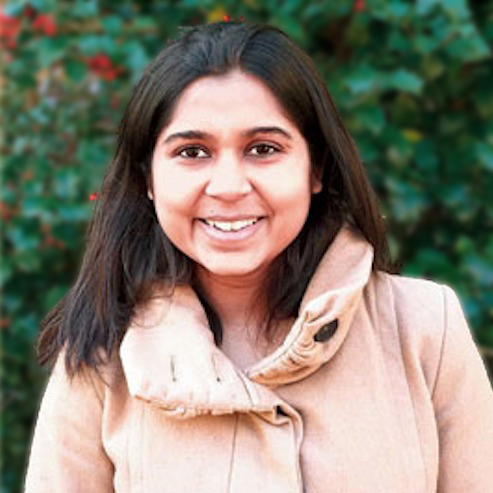
Professor Vedika Khemani, Stanford University, USA

Professor Vedika Khemani, Stanford University, USAVedika Khemani is a theoretical physicist at Stanford University. Her research interests in quantum dynamics, many-body quantum entanglement, and emergent properties of out-of-equilibrium quantum matter represent a burgeoning research direction of interest to several subfields including condensed matter physics, quantum information science and quantum engineering. After receiving her PhD from Princeton, she spent her postdoctoral years as a Junior Fellow at the Harvard Society of Fellows before joining Stanford as an Assistant Professor of physics in 2019. Her accolades include the William L. McMillan Award, the APS George E. Valley Jr. Prize, an Alfred P. Sloan Fellowship, and an Early Career Award from the Department of Energy. 
Professor Michael Knap, Technical University of Munich, Germany

Professor Michael Knap, Technical University of Munich, GermanyThe research of Michael Knap aims at a broad range of questions from condensed matter theory and bridges to quantum optics, atomic physics, and quantum information. Interactions and correlations in condensed matter systems often manifest in striking and novel properties. These properties emerge from collective behavior of the quantum particles. Many examples can be found in nature, including superconductors, quantum magnets and superfluids. The main focus of Knap's work has been on the development of analytical and numerical techniques to elucidate the effects of strong interactions. His research has addressed various questions in non-equilibrium quantum dynamics and transport in ultracold quantum gases and correlated quantum materials. Michael Knap studied physics at Graz University of Technology, Austria. After obtaining his PhD he moved to Harvard University, USA, where he held a postdoctoral fellowship in the Condensed Matter Theory Group and at the Institute for Theoretical Atomic Molecular and Optical Physics (ITAMP). In 2015 Knap was awarded a Rudolf Mößbauer Tenure Track Assistant Professorship. |
Chair
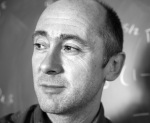
Professor Jon Keating FRS, University of Bristol, UK

Professor Jon Keating FRS, University of Bristol, UK
Jon Keating is based at the University of Bristol. He gained his first degree from Oxford University and his PhD from the University of Bristol, under the supervision of Professor Sir Michael Berry FRS. His research is centred in the areas of quantum chaos, random matrix theory and number theory. He has held a BRIMS Research Fellowship, funded by Hewlett-Packard, and an EPSRC Senior Research Fellowship.
| 15:00 - 15:40 |
Results and new perspectives on quantum spin glasses
Quantum spin glass models of mean-field type are prototypes of quantum systems exhibiting phase transitions related to the spread of the eigenstates in configuration space. Originally motivated by spin glass physics and as complex model systems to test quantum adiabatic algorithms, they are also discussed in relation to many-body localisation phenomena. Remarkably, despite being non-integrable quantum spin glasses are expected to possess intermediate phases in which eigenstates occupy only a fraction of configuration space. In this talk, Professor Warzel will introduce a class of hierarchical quantum glasses for which this assertion can be proven at least on the level of the specific free energy. This class constitues the quantum version of Derrida's generalised random energy models. The quantum nature is thereby incooperated through a transversal magnetic field. By proving a quantum Parisi formula for their free energy the full phase diagram is established: the model exhibits spin glass phases as well as mixed and quantum paramegnetic phases. The mechanism behind this is the principle of erasure of hierarchical spin glass order: types of spins decide in groups whether to freeze into quantum paramagnetic order or not depending on the strength of the transversal magnetic field and the temperature. I will conclude the talk with an overview of conjectures related to the fate of Parisi's order parameter and the structure of the eigenfunctions for these models. 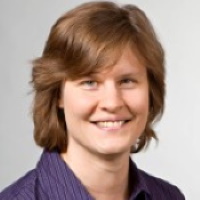
Professor Simone Warzel, Technical University of Munich, Germany

Professor Simone Warzel, Technical University of Munich, GermanySimone Warzel is a German mathematical physicist at the Technical University of Munich. She studied physics and mathematics at the University of Erlangen-Nuremberg with a year at the University of Cambridge for Part III of the Mathematical Tripos, and earned her doctorate from the University of Erlangen-Nuremberg in 2001. Before joining the Technical University of Munich, she was an assistant professor at Princeton University. Her research interests involve statistical mechanics and many-body problems in quantum mechanics, and in particular disordered quantum systems. In 2009 she was awarded the Young Scientist Prize in Mathematical Physics. Warzel is a former Sloan Research Fellow and a von Neumann Fellow at the Institute for Advanced Study. She was a plenary speaker at the 2012 International Congress on Mathematical Physics, and a speaker in the mathematical physics section of the 2018 International Congress of Mathematicians in Brazil. |
|---|---|
| 15:40 - 16:20 |
Spectral statistics of chaotic many-body systems
We derive a trace formula that expresses the level density of chaotic many-body systems as a smooth term plus a sum over contributions associated to solutions of the nonlinear Schrödinger (or Gross–Pitaevski) equation. Our formula applies to bosonic systems with discretised positions, such as the Bose–Hubbard model, in the semiclassical limit as well as in the limit where the number of particles is taken to infinity. We use the trace formula to investigate the spectral statistics of these systems, by studying interference between solutions of the nonlinear Schrödinger equation. We show that in the limits taken the statistics of fully chaotic many-particle systems becomes universal and agrees with predictions from the Wigner–Dyson ensembles of random matrix theory. The conditions for Wigner–Dyson statistics involve a gap in the spectrum of the Frobenius–Perron operator, leaving the possibility of different statistics for systems with weaker chaotic properties. (Joint work with Rémy Dubertrand) 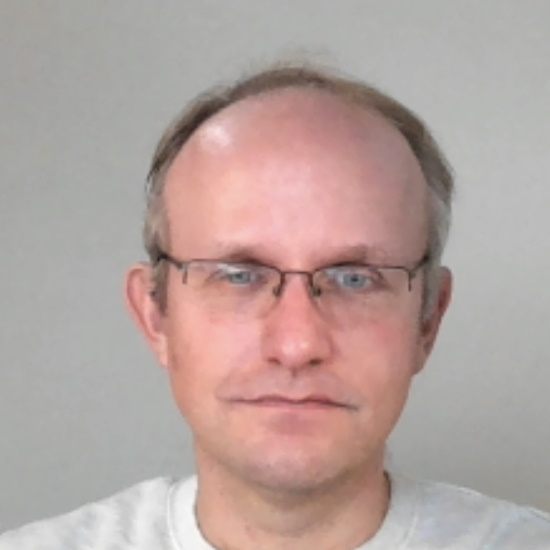
Dr Sebastian Müller, University of Bristol, UK

Dr Sebastian Müller, University of Bristol, UKSebastian Müller is a Senior Lecturer in Mathematical Physics at the University of Bristol. In 2006 completed his PhD under the supervision of Fritz Haake at the University of Duisburg-Essen, about the periodic orbit approach to universality in quantum chaos. He joined Bristol in 2007, after a postdoc at Cambridge. His research interests include quantum chaos and its relation to random matrix theory, and semiclassical methods for many-particle systems as well as in mesoscopics. |
| 16:20 - 17:00 |
The Eigenstate Thermalization Hypothesis: What is it, and what can be proved?
The ETH conjectures that in the large N mean field limit, certain N-particle quantum systems are quantum ergodic in roughly the same sense as in known results for single particle quantum systems whose classical limit is ergodic. The ETH has been studied in many physics articles, but the only rigorous mathematical results to date appear to be in random matrix theory, and in a quite different spirit from semi-classical quantum ergodicity. My talk will first review the definition of ETH from some of the well-known physics articles and review the models which they believe to satisfy the ETH. Then I review the known mathematical results in many body quantum mechanics concerning the mean field (classical) limit of many body systems, in particular Egorov theorems (due to Ammari-Nier, Frohlich-Knowles and others). Finally, I review the standard results on quantum ergodicity and mixing, including converse results which say that the classical limit must be mixing if the ETH holds for it. 
Steve Zelditch, Northwestern University, USA

Steve Zelditch, Northwestern University, USASteve Zelditch is Professor of Mathematics at Northwestern University. He works in spectral geometry, complex geometry and mathematical physics, with a particular interest in asymptotics problems. He received his bachelor’s degree from Harvard in 1975, and his PhD from UC Berkeley in 1981 under the direction of Alan Weinstein. He was Ritt Assistant Professor at Columbia (1981-1985), and went from Assistant Professor to Professor of Mathematics at Johns Hopkins University (1986-2009), before moving to Northwestern in 2010. He was an invited speaker at the ICM in Beijing (2004) and has twice been an invited speaker at the International Congress of Mathematical Physics. He gave Current Developments in Mathematics lectures at Harvard in 2009 and an invited AMS national address in 2005. He served on the Scientific Advisory Board of the Centre de Recherches Mathematiques during the years 2004-2007. He has been on the editorial boards of Annales Scientifiques de l'École Normale Supérieure, American Journal of Mathematics, Journal of Mathematical Physics and is currently on the editorial boards of the Communications in Mathematical Physics and Analysis and PDE. |
| 17:00 - 17:30 | Coffee break |
| 17:30 - 18:30 |
Panel Discussion 2
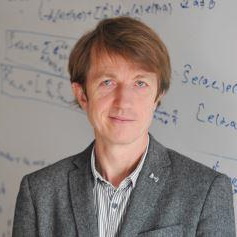
Professor Tomaz Prosen, University of Ljubljana, Slovenia

Professor Tomaz Prosen, University of Ljubljana, SloveniaTomaz Prosen has been a full professor of theoretical physics at University of Ljubljana since 2008, where he leads a group on nonequilibrium quantum and statistical physics. He obtained his Ph.D. in 1995 at the same university. His main current research interest is in fundamental problems in nonequilibrium dynamics and quantum many-body physics, where he applies methods of integrability, dynamical systems and ergodic theory, and random matrix theory. 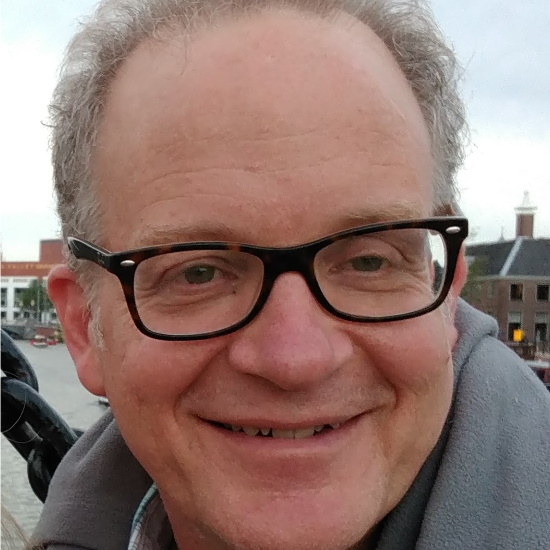
Professor Paul Fendley, Oxford University, UK

Professor Paul Fendley, Oxford University, UKPaul Fendley is Senior Research Fellow at All Souls College and Professor at the Rudolf Peierls Centre for Theoretical Physics, University of Oxford. His research is on statistical mechanics, condensed matter, and mathematical physics, with a particular emphasis on integrable systems and other non-perturbative approaches. He is a Fellow of the American Physical Society and the Institute of Physics. 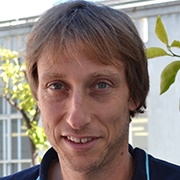
Professor Ehud Altman, University of California Berkeley, USA

Professor Ehud Altman, University of California Berkeley, USAProfessor Ehud Altman received his PhD from the Technion, Haifa in 2002. He was then a postdoctoral fellow at Harvard university for three years before joining the faculty of the Weizmann Institute of Science as a Yigal Alon fellow in 2005. He was promoted to the rank of Associate professor there in 2011. In 2010 he was awarded the young investigator prize from the Israel Physical Society and the Krill prize of the Wolf foundation. During the academic year 2012-2013 he was a Miller visiting professor at UC Berkeley. He joined the Physics department of UC Berkeley as a professor in the summer of 2016. 
Professor Andrew G Green, University College London, UK

Professor Andrew G Green, University College London, UKProfessor Green has been chair of theoretical condensed matter physics at UCL since 2011. His research involves using field theoretical and tensor network approaches to understand and simulate many-body quantum phenomena both classically and on quantum computers. He is also interested in the insights that this may provide for quantum computation. The phenomena of quantum chaos are of particular interest both because of the fundamental challenge that they pose and the insights that they might give on the limitations of quantum simulation and computation. |
Chair
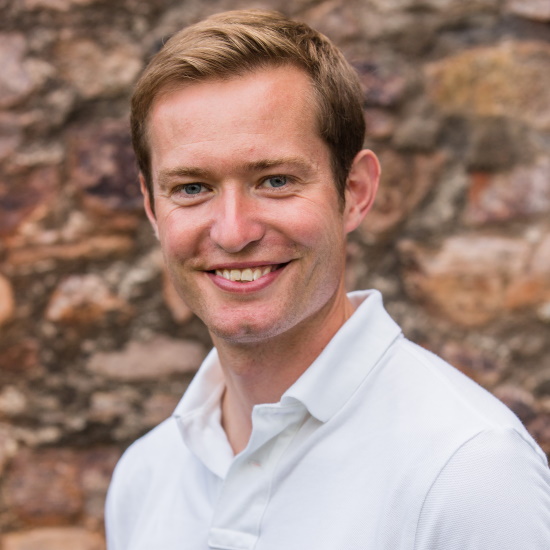
Dr Mike Blake, University of Bristol, UK

Dr Mike Blake, University of Bristol, UK
Dr. Mike Blake is a Lecturer in Mathematical Physics at the University of Bristol. He began his research career at the University of Cambridge, first as a Ph.D. student in the Department of Applied Mathematics and Theoretical Physics and then as a Junior Research Fellow at Churchill College. This was then followed by three years as a Postdoctoral Research Associate at the Massachusetts Institute of Technology. His research uses techniques from quantum field theory and string theory to gain new insights into many-body quantum dynamics, with a particular focus on connections between the scrambling of quantum information and hydrodynamics.
| 15:00 - 15:40 |
Spectral properties and thermalization with matrix product states
Matrix product states, and operators, are powerful tools for the description of low energy eigenstates and thermal equilibrium states of quantum many-body systems in one spatial dimension. But in out-of-equilibrium scenarios, and for high energy eigenstates of generic systems, the scaling of entanglement with time and system size makes a direct application often impossible. However, beyond the standard algorithms, MPS and more general TNS techniques can still be used to explore some of the most interesting dynamical properties. A particular case is a recently introduced method in which MPO techniques are combined with Chebyshev polynomial expansions to explore spectral properties of quantum many-body Hamiltonians. In particular, this method can be used to probe thermalization of large spin chains without explicitly simulating their time evolution, as well as to compute full and local densities of states. 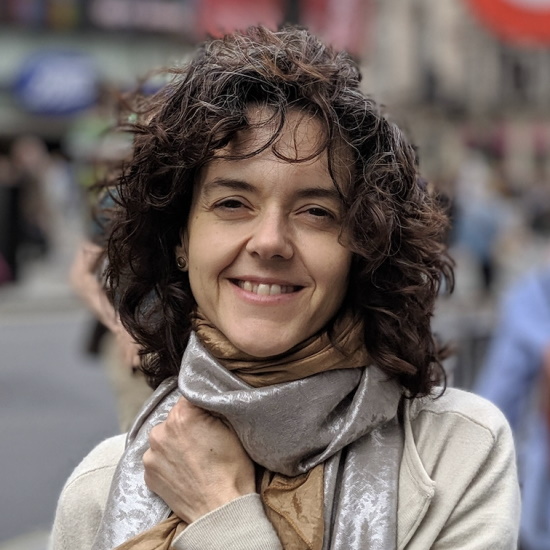
Dr Mari-Carmen Banuls, Max Planck Institute of Quantum Optics, Germany

Dr Mari-Carmen Banuls, Max Planck Institute of Quantum Optics, GermanyMari Carmen is a researcher at the Max Planck Institute for Quantum Optics in Garching (Germany). She obtained a PhD in Physics from the University of Valencia in 2000 and a PhD in Computer Science by the Polytechnical University of Valencia in 2006. Her research focuses on the development and application of Tensor Network methods for the numerical simulation of quantum many body systems. In particular, she is interested in the investigation of non-equilibrium dynamical problems, and in applications of the toolbox to quantum many-body problems outside the realm of condensed matter physics, such as lattice gauge theories and classical stochastic models. |
|---|---|
| 15:40 - 16:20 |
Hydrodynamics and the Spectral Form Factor
Ensembles of quantum chaotic systems are expected to exhibit random matrix universality in their energy spectrum. The presence of this universality can be diagnosed by looking for a linear in time 'ramp' in the spectral form factor, but for realistic systems this feature is typically only visible after a sufficiently long time. It is important to understand the emergence of this universality and how it connects to the larger body of phenomena associated with quantum chaos. This talk will present a hydrodynamic theory of the spectral form factor in systems with slow modes. The formalism predicts the linear ramp at sufficiently late time and gives a quantitative framework for computing the approach to ramp. 
Professor Brian Swingle, Brandeis University, USA

Professor Brian Swingle, Brandeis University, USABrian Swingle is an assistant professor of physics at Brandeis University and adjunct assistant professor at the University of Maryland, College Park. He obtained his PhD at the Massachusetts Institute of Technology and held postdoctoral positions at Harvard University and Stanford University and a junior visiting professor position at the Institute of Advanced Study in Princeton. Swingle's research interests focus on the physics of quantum information especially in the context of quantum many-body systems and quantum gravity. He is a pioneer of the idea that space-time can emerge from quantum entanglement and introduced the use of tensor networks in the study of quantum gravity. Current interests include the efficient simulation of quantum many-body systems using entanglement-based methods and the out-of-equilibrium dynamics of quantum information. |
| 16:20 - 17:00 |
Quantum Algorithmic Measurement
Can quantum computational tools enhance the precision and efficiency of physical experiments? Promising examples are known, but a systematic treatment and comprehensive framework are missing. We introduce Quantum Algorithmic Measurements (QUALMs) to enable the study of quantum measurements and experiments from the perspective of computational complexity and communication complexity. The measurement process is described, in its utmost generality, by a many-round quantum interaction protocol between the experimental system and a full-fledged quantum computer. The QUALM complexity is quantified by the number of elementary operations performed by the quantum computer, including its coupling to the experimental system. We study how the QUALM complexity depends on the type of allowed access the quantum computer has to the experimental system: coherent, incoherent, etc. We provide the first example of a measurement "task", which can be motivated by the study of Floquet systems, for which the coherent access QUALM complexity is exponentially better than the incoherent one, even if the latter is adaptive; this implies that using entanglement between different systems in experiments, as well as coherence between probes to the physical system at different times, may lead to exponential savings in resources. We extend our results to derive a similar exponential advantage for another physically motivated measurement task which determines the symmetry class of the time evolution operator for a quantum many-body system. Many open questions are raised towards better understanding how quantum computational tools can be applied in experimental physics. A major question is whether an exponential advantage in QUALM complexity can be achieved in the NISQ era. 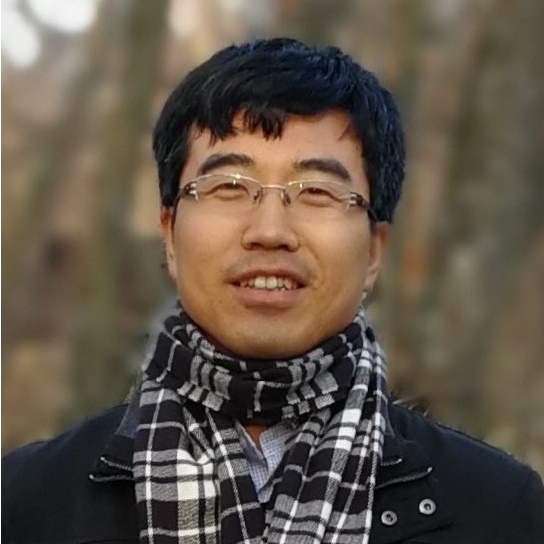
Professor Xiao-Liang Qi, Stanford University, USA

Professor Xiao-Liang Qi, Stanford University, USAXiao-Liang Qi is a Professor at the Physics Department of Stanford University. He graduated from Tsinghua University in Beijing in 2007 and joined the Stanford faculty in 2010 after postdoctoral research at Stanford and UC Santa Barbara. Xiao-Liang's recent work focuses on the role of quantum entanglement in quantum many-body physics and quantum gravity. He has also worked on topological states of matter. |
| 17:00 - 17:30 | Coffee break |
| 17:30 - 18:30 |
Panel Discussion 3
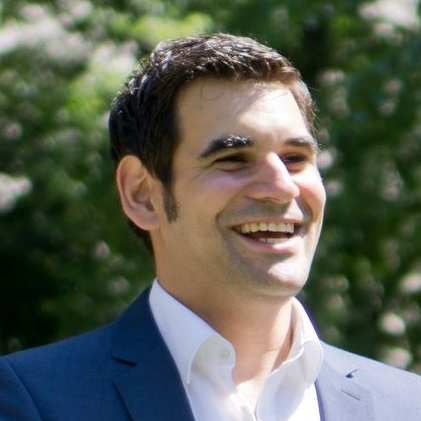
Dr Ulrich Schneider, University of Cambridge, UK

Dr Ulrich Schneider, University of Cambridge, UKDr Ulrich Schneider is an experimental physicist studying quantum simulation and many-body physics using ultracold atoms in optical lattices. He is a reader in many-body physics at the Cavendish Laboratory of the University of Cambridge and a fellow of Jesus College Cambridge. Earlier positions include the Ludwig-Maximilians Universität in Munich and the Johannes-Gutenberg Universität in Mainz. He has worked extensively on non-equilibrium dynamics in optical lattices and the realisation of many-body localisation. Other works include studies of quantum transport, the dynamics of a quantum phase transition, fermionic Mott insulators, and Negative Absolute Temperatures. He also developed interferometric probes for topology and realized optical quasicrystals. He is the winner of the 2015 Rudolf-Kaiser prize, holds an ERC starting grant, and is part of the AION consortium, the DesOEQ programme grant and the UK Quantum Technology Hub in Computing & Simulation. 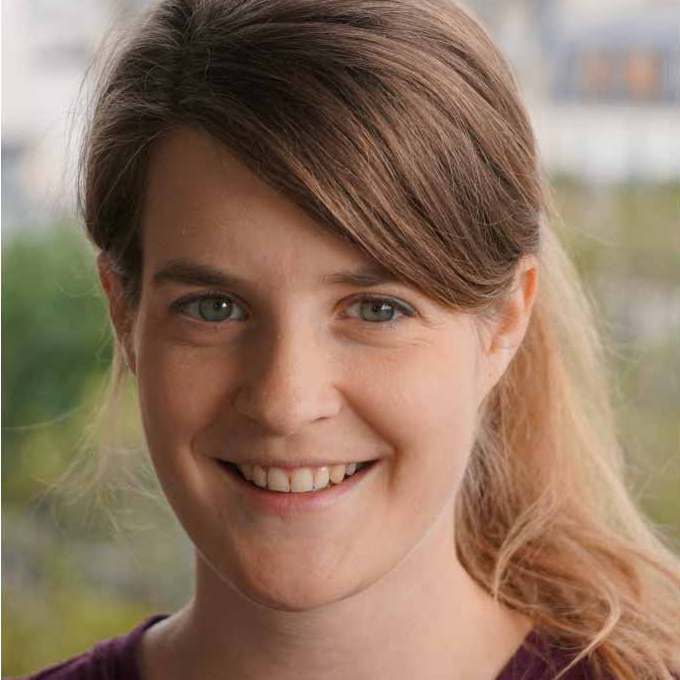
Professor Monika Aidelsburger, Ludwig-Maximilians-Universität (LMU) München & Munich Center for Quantum Science and Technology (MCQST), Germany

Professor Monika Aidelsburger, Ludwig-Maximilians-Universität (LMU) München & Munich Center for Quantum Science and Technology (MCQST), GermanyMonika Aidelsburger received her PhD at the LMU Munich in 2015. She has performed pioneering experiments on realizing artificial magnetic fields with ultracold atoms in optical lattices, including the first realization of the Hofstadter model with cold atoms and the measurement of the Chern-number with bosonic atoms. After a Postdoc-period at Collège the France in Paris, where she worked with uniform 2D Bose gases, she returned to LMU as a junior group leader in 2017. She received an ERC Starting Grant for simulating lattice gauge theories with ultracold fermionic Yb atoms and received a tenure-track professorship at LMU in 2019. Her main areas of research include quantum simulations of topological states of matter, lattice gauge theories, many-body localization and Hilbert-space fragmentation. 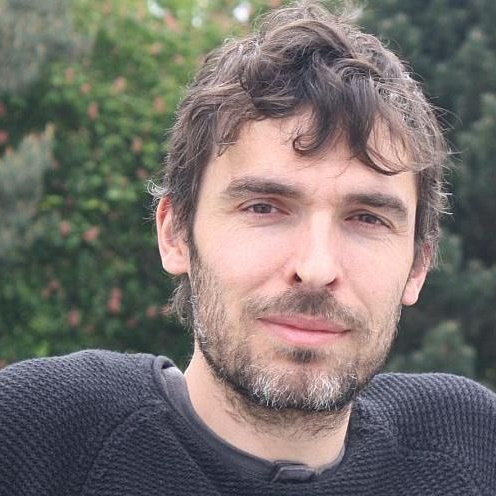
Professor Igor Lesanovsky, University of Tübingen, Germany

Professor Igor Lesanovsky, University of Tübingen, GermanyIgor Lesanovsky studied physics at the Universities of Rostock and Heidelberg (Germany). After having obtained his PhD from Heidelberg in 2006 stays as postdoctoral fellow at the Institute for Electronic Structure and Laser in Heraklion (Greece) and the University of Innsbruck (Austria) followed. In 2009 he assumed a permanent lecturer position at the University of Nottingham (UK). Since 2019 he leads the Theoretical Atomic Physics and Synthetic Quantum Systems group at the University of Tübingen (Germany). He also holds a part-time professorial position at Nottingam. A large part of his research focusses on open quantum systems where he is interested in the investigation of collective phenomena, such as phase transitions and emergent slow dynamics. He has a track record in collaborating with experimentalists on questions relating to quantum optics, quantum information processing as well as on the exploration and exploitation of collective quantum phenomena in cold atomic gases. 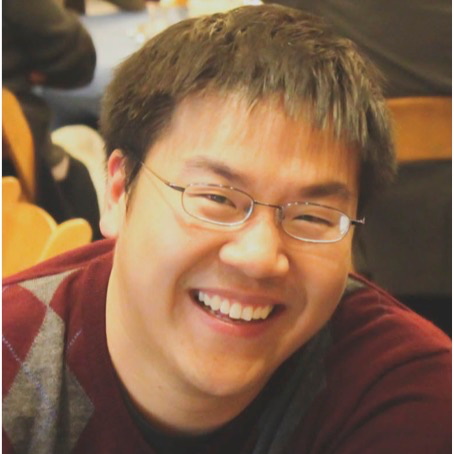
Dr Norman Yao, UC Berkeley, USA

Dr Norman Yao, UC Berkeley, USANorman Yao’s research interests lie at the interface between atomic, molecular and optical physics, condensed matter, and quantum information science. In recent years, the synergy between these fields has been strengthened by a tremendous amount of experimental progress, which has made it possible to assemble complex, strongly interacting, quantum many-body systems from individual atoms, ions, molecules and photons. These advances have opened the door to realizing non-equilibrium phases of matter, to understanding the dynamics of quantum thermalization (and of its failure), and to measuring the intrinsic properties of topological phases. Dialogue between theory and experiment is especially crucial to addressing these questions and the Yao group employs a variety of theoretical, numerical and experimental tools. Dr. Yao received his PhD in 2014 and was subsequently a Miller Fellow at UC Berkeley, before joining the faculty of the physics department in 2016. |

